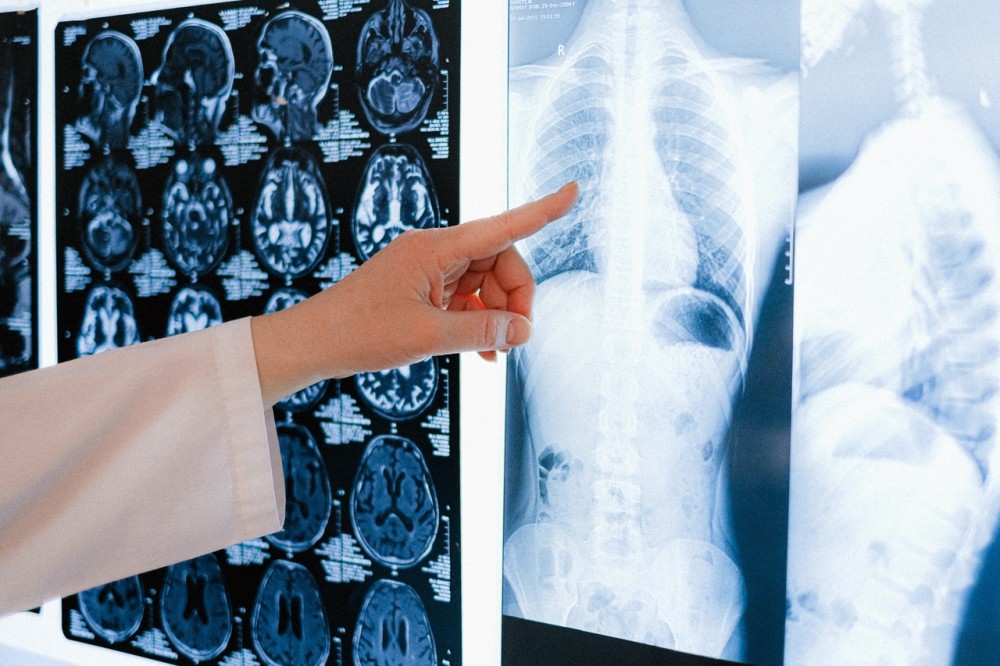ABOUT Magnetic Resonance Imaging (MRI)
Magnetic Resonance Imaging (MRI)
Without the use of harmful ionizing radiation, non-invasive imaging technology is used to explore the structure and function of the body in both health and illness.
It's frequently used to identify diseases, diagnose them, and track their progress.
It works by stimulating and detecting changes in protons in the water that makes up biological tissues.
Magnetic resonance angiography, commonly known as a magnetic resonance angiogram or MRA, is a form of magnetic resonance imaging (MRI) that focuses on the body's blood arteries. Magnetic resonance angiography is a significantly less intrusive and uncomfortable examination than a standard angiogram, which includes introducing a catheter into the body.
You lie flat within the magnetic resonance imaging scanner during magnetic resonance angiography. This is a big tube with a tunnel-like appearance. In rare situations, a special dye called contrast may be injected into your circulation to help you view your blood vessels more clearly. An intravenous (IV) needle is used to provide the contrast as necessary.
What are the benefits of Magnetic Resonance Angiography?
Magnetic resonance angiography may be recommended if your healthcare professional suspects you have a constriction or blockage of blood arteries elsewhere in your body. During this examination, your healthcare professional may also search for the following conditions:
⦁ An aneurysm is a weakening in the arterial wall.
⦁ Aortic coarctation is a narrowing of the aorta.
⦁ Aortic dissection, or bleeding in and along the aorta's wall
⦁ Identifying the source of a stroke
⦁ Heart disease symptoms
⦁ Vascular narrowing or obstruction in the arms or legs
⦁ Renal artery stenosis is a constriction of the kidney's blood arteries that can cause excessive blood pressure and even death.
During Magnetic Resonance Angiography, what happens?
Magnetic resonance angiography can be performed either as an outpatient procedure or as part of a hospital stay. This is how magnetic resonance angiography works in general:
⦁ You will put on a gown and remove any clothes, jewelry, or other things that may interfere with the scan.
⦁ An IV will be used to provide a contrast dye to make blood vessels easier to visualize.
⦁ You'll be seated on an examination table outside the MRI scanner.
⦁ The table will then move into place, allowing you to enter the MRI scanner.
⦁ During the scanning procedure, you must remain completely motionless.
⦁ Any movement might cause the pictures to blur, making the findings less precise.
⦁ Don't be startled if the MRI scanner creates a lot of noise, particularly loud buzzing noises.
⦁ It's possible that the complete scan will take an hour or more.
⦁ The kind and amount of blood vessels that your healthcare practitioner wants to check will determine how long it takes.
There are usually no issues or negative effects from the scan.
You can usually depart following the magnetic resonance angiography if it's done as an outpatient procedure. Your doctor will most likely arrange a follow-up visit to go through the test results with you.
The pictures from the magnetic resonance angiography will be examined by your healthcare practitioner. A normal test result is one in which no obstructions or anomalies are discovered.
After
An abnormal result indicates that your healthcare professional noticed a problem with one or more of your body's blood vessels. This might indicate that you have atherosclerosis, or artery hardening, or another circulation condition. Based on the precise condition that is detected, your healthcare professional will most likely recommend more testing or treatments.
What to Anticipate
An MRI is a painless procedure. During the treatment, your kid may be required to lay motionless on the MRI table for 30-45 minutes, however, there are small pauses in between each scan. A blanket can be offered if your kid feels cold while resting on the MRI table.

